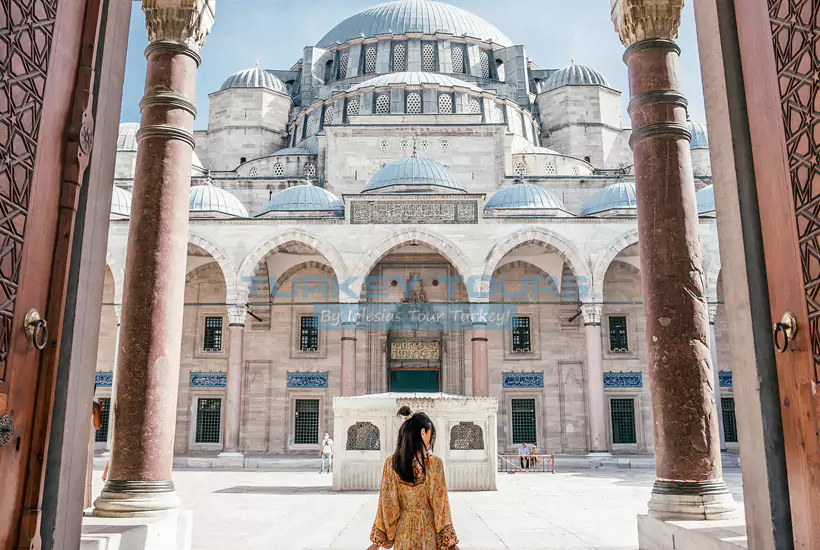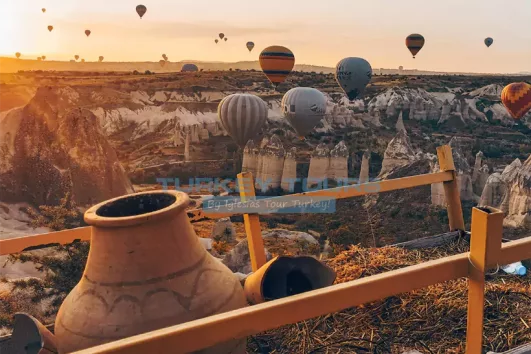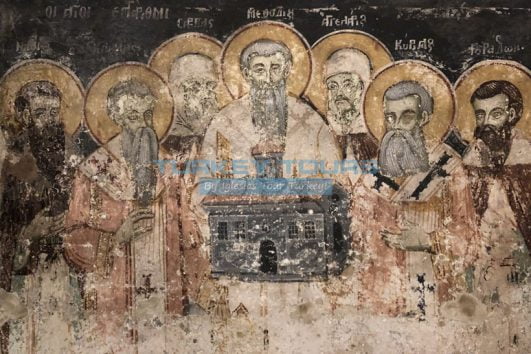ISTANBUL
Istanbul is located in northwestern Turkey, and the approximate population is around 15 – 20 million. It is the sixth most populous metropolitan city in the world. It is located in the Marmara Region, one of Turkey’s seven regions.
The Marmara Sea is an inland sea that connects the Black Sea to the Aegean and the Mediterranean Sea. Since there are many marble quarries in the surrounding islands, the name Marmaros, which means marble in Greek, was used. Today, “Marmaros” is used in Turkish as Marmara and gave its name to this inner sea. Istanbul is a city that separates the Asian and European continents and has land parts at both points and hosted important empires.
It has attracted a lot of attention from the past to the present with its strategic location. Istanbul is a historical peninsula with a coast to the Marmara Sea, Istanbul Strait, and Golden Horn. In addition, it is a city that separates the Asian and European continents and has land parts at both points, and hosted important empires.
During your travels, it is possible to see extraordinary religious and civil structures belonging to the Roman, Byzantine, and Ottoman periods. Istanbul, which has a history of 2700 years, was first seen as a settlement by Greek colonies from Megara (685 BC). Later, in 667 BC, the Dorians from Greece established a new city on behalf of their king, Bizas, on the place where today’s Dolmabahçe palace is located and the city was named Byzantium.
Undoubtedly, one of the brightest periods of Istanbul is the time of the Roman emperor Constantine I. He moved the Roman capital here and named the city “New Rome“, but the city became famous as Constantinople. After the division of the Roman Empire in AD 395, this became the capital of the Eastern Roman. Following the Latin invasions in 1204, Constantinople came under the rule of the Latin Empire for 57 years. The city, which was taken back later, continued to be the capital of Byzantium until the conquest of Istanbul by Mehmet the Conqueror in 1453.
The city, which is difficult to besiege with its gigantic and robust walls, was protected by 3 rows of walls and ditches. Only Fatih Sultan Mehmet crossed these walls and rewrote the history of Istanbul. It was accepted into the UNESCO World Heritage List in 1985 with its historical sites. Historical areas consist of 4 main regions. These are; Zeyrek mosque and its surroundings, Sultanahmet mosque and its surroundings, Istanbul walls, and Süleymaniye mosque and its surroundings.

HIGHLIGHTS IN SULTANAHMET SQUARE
The old part of the city, located at the tip of the Historical Peninsula, is called Sultanahmet Square. Although Sultanahmet Square is geographically located in the east of the city, it has always been the center of the city politically. Every period, imperial palaces and sacred places were established in this area.
The biggest proof of this is the million stone in the opposite corner of Hagia Sophia. This is the place where the world began in the capital of the Eastern Roman Empire, that is the zero point. The main street, which started here, passed through certain squares and reached the gates of the city walls from there to all over the world.
After the conquest of Istanbul, the Ottoman Empire did not change its spiritual character. They built their mosques and palaces here. Sultanahmet Square has become one of the most active places of daily life.
In 2nd century AD. the first hippodrome was built in Constantinople. Approximately 100 years later the entire treasury and administration moved here. Considering that the works of the New Rome should be as magnificent as before, the Great Constantin expands the hippodrome and gives it its final appearance.
That is why it is also known as the Hippodrome of Constantine the Great. A similar one was built by taking the Circus Maximus Hippodrome in Rome, Italy. The 100,000-seat historical hippodrome is 480 meters long, 117 meters wide, and in the shape of a horseshoe (the size of 6 football fields).

In the spina wall in the middle of the hippodrome, there were monuments brought from different parts of the world and showing the power of the empire. With the spread of Christianity, 60 days of horse races a year were organized instead of bloody demonstrations. During the horse races, the contestants take 7 laps around the spina wall and the winner greets the emperor by coming to the imperial box.
Bronze sculptures from Greek islands, Egypt, and Rome adorned many parts of the building in the hippodrome. But during the 57 years of the Latin period, it was kidnapped, sold, or melted and used for different purposes. The most important of these is the bronze 4 horse sculpture made by Lysippos, which was taken to the St. Marcus Square in Venice.
The Hippodrome is one of the places where the people and the emperor united in the Roman period. The Nika riot has been recorded as the bloodiest rebellion in the history of Constantinople. After the horse race ended in 532, 10 thousand of people did not leave the hippodrome and shouted slogans against the emperor and the ruler of the city.
The number of participants in the rebellion that lasted for days increased and plundering started in the streets. The people took action to choose another king to replace King Justinyanus. Justinian ordered his soldiers to quell the rebellion and 30,000-40,000 people were slaughtered at the hippodrome. According to rumors, the hippodrome floor and turbines were painted with blood and the deceased were buried in the hippodrome floor.
There are many valuable monuments on the hippodrome. One of the most interesting monuments in the middle of the square is the Egyptian obelisk. The monument that tells about the work of Pharaoh Thutmosis the 3rd in Mesopotamia in 1550 is the oldest structure here. On the pedestal of the monument, which was brought from corn during the Roman period, there are reliefs of the emperor while watching a car race. The story of the pharaoh crossing the Fırat River during the war is described in the hieroglyphs on the column.
The other monument in Sultanahmet square is the serpentine column where three snakes brought from the Apollon temple in Delphi are intertwined. The obelisk at the southern end of the hippodrome is a 32-meter-long masonry column belonging to the Byzantine emperor Constantine.
The German fountain at the north end is the newest monument here. During the construction of Anatolian Baghdad railways, by the German Emperor in 1898 has been ordered to construct this structure to symbolize the Turkish-German friendship. It was built by Wilhelm and presented to the Ottoman Sultan Abdulmecid II.
Another valuable work is the Basilica Cistern built in the 6th century by the Byzantine emperor Justinian, built on an area of 9800 square meters. It was built to solve the water problem in the city despite the danger of siege of Istanbul. It is also known as the Basilica Palace among the people because of its column forest appearance. The Basilica Cistern, which is the largest cistern in Istanbul with a water capacity of 80,000 tons, was used to irrigate the palace gardens during the Ottoman period.
FINAL THOUGHTS
Istanbul is one of the richest cities in Turkey and it has several places to explore, especially in Sultanahmet Square! Exploring those on your own is easy since the monuments are all within walking distance. However, you definitely need a tour guide to get enough knowledge and true information as well as to avoid any possible hassle of such Metropol City! To see our Tours in Istanbul, read our post!
If you wish to check-out our fully guided Private Tours in Sultanahmet Square, do not hesitate to contact our team! If you liked our posts, do not forget to share them with your friends!










